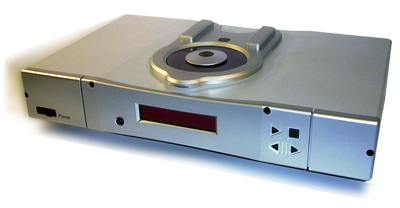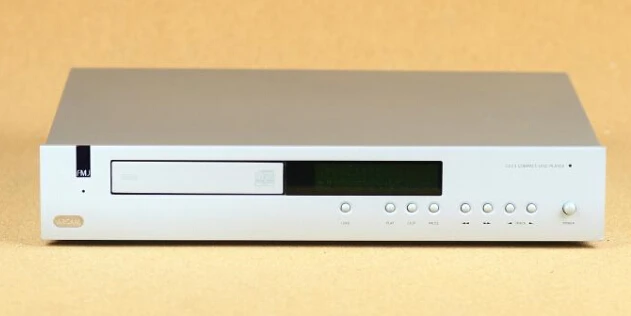Rega’s first Planet CD player, which was released in the mid-1990s and was not to be confused with the first Planet turntable, was the company’s entry-level silver disc spinner. This was the 2000-model-year update, and it was an unusual piece of equipment. It’s a pleasure to operate simply because it doesn’t have a traditional drawer loading disc tray layout — Rega claims that its cantilevered top loading arrangement saves money, allowing more monies to be allocated to the transport and case design. Even better, the front fascia isn’t cluttered with every conceivable function. Instead, you’ll get four different-shaped rubber parts as well as a circular illuminated power switch.
The display is a standard Sony fluorescent display, but there’s a twist here as well. Rega’s CD spinners are a calming ruby red, not the boring chilly blue of the Japanese giant’s budget CD spinners. It looks great and adds the right finishing touch to an otherwise stunning piece of industrial design. A new underslung Sony transport and much of the old Planet circuit topology are hidden beneath the top loading lid assembly. The only difference is that the DAC, power supply, and coupling capacitors have all been improved in the 2000 model. The former is a 24bit Delta Sigma Rega IC40 (reported to be a Burr-Brown adapted to Rega’s specs), with an additional power supply for the digital part. A toroidal transformer with separate windings for the display and analogue audio stages is used in the latter. In the signal path, Evox film and non-polarized electrolytic capacitors are utilized, while low impedance capacitors are employed in the power supplies.
The extruded aluminium case is well-made, but it’s not from Japan’s heavyweight manufacturing school. It’s small, measuring 435x100x270mm, but because it’s a toploader, it won’t fit into your system rack. The Planet 2000 uses Rega’s VCS feet (viscous coupled system) to provide mechanical isolation from its surroundings, ostensibly eliminating the need for a suspension, according to the company. There are fixed audio line outputs on the back, as well as optical and coaxial digital outputs and an IEC mains socket. The player comes with phono leads to get you started, but Rega advises using their Couple interconnect. The optional remote control adds a variety of capabilities, including Program, Repeat, and – most importantly for me – Display Off.
The Planet 2000 isn’t as rich-sounding as its predecessor, but it’s also not as dry and clinical as some of its Asian competitors. Instead, it walks a narrow line between dryness and neutrality, with a noticeable thinness in the upper midband that stands out particularly on female vocals like Kate Bush’s The Man with the Child in His Eyes. The sound has a subtle lightness of touch and edge to it, rather than carrying the full width and body of Kate’s voice. Don’t get me wrong: there’s no roughness or rawness here, but we’re obviously in a different country than the old Planet turntable’s rich, resonant roundness!
When you play Kraftwerk’s Expo 2000, you’ll hear a lush analogue synthesizer sound. The Rega’s handling of harmonics is particularly impressive; it carries them better than any other player of the time. Everything sounds bright and alive, even if it isn’t purposely tonally rich. There’s a lot of detail, and it all comes together fairly nicely for the price. The bass is a touch light, but it moves around a lot. When you combine this with the player’s liquid midband, which makes it easier to follow melodies than any other sub-thousand pound silver disc spinner of the era, the result is a lot of fun. It had a cosmic sound at the turn of the millennium. These days, a nice specimen can be had for roughly £250, which is a great deal.








